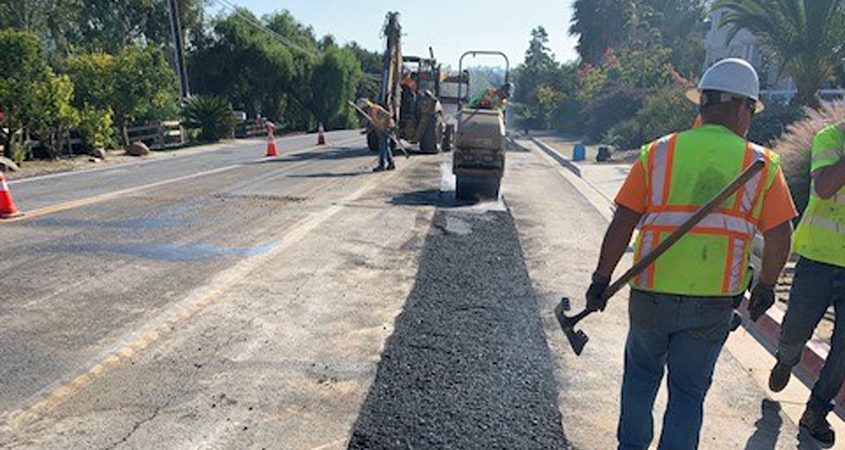The Olivenhain Municipal Water District recently completed the Manchester Avenue Potable Water Pipeline Project. In total, 3,700 linear feet of aged potable water pipeline was replaced along Manchester Avenue, Rancho Santa Fe Road and Encinitas Boulevard.
The pipelines previously serving water in this area were installed in 1961 and were approaching the end of their lifespan. OMWD takes a proactive approach in repairing and replacing aging water infrastructure to avoid leaks and ensure the continuation of uninterrupted water service to its customers. In the third year of drought in California, projects like this pipeline replacement, help save potable water and reduces costs to ratepayers.
“Emergency leaks are very costly, can waste millions of gallons of water, and can be disruptive to surrounding communities,” said Bob Topolovac, OMWD board director. “The investments we made to prevent these emergencies will benefit our ratepayers well into the future.”

Crews complete the final backfilling and repaving of the excavation area on Manchester Avenue required to facilitate the new pipeline installation. Photo: Olivenhain Municipal Water District
Pipelines replaced included:
- Approximately 1,900 linear feet of 12-inch pipeline in Manchester Avenue from Colony Terrace north to Encinitas Boulevard
- Approximately 450 linear feet of 12-inch pipeline in Encinitas Boulevard west of Rancho Santa Fe Road
- Approximately 500 linear feet of 12-inch pipeline in Rancho Santa Fe Road north of Encinitas Boulevard
- Approximately 850 linear feet of eight-inch pipeline in South Rancho Santa Fe Road

The project completion map shows streets now fully opened to traffic and restored. Graphic: Olivenhain Municipal Water District
To minimize the impact on the surrounding community, construction took place mainly at night. The project was completed on time and with no major disruptions or water outages to the impacted community. OMWD coordinated with the City of Encinitas on a traffic management plan to mitigate construction traffic, and there were no significant traffic impacts.
(Editor’s note: The Olivenhain Municipal Water District is one of the San Diego County Water Authority’s 24 member agencies that deliver water across the metropolitan San Diego region.)




 Sweetwater Authority Logo 2019
Sweetwater Authority Logo 2019
